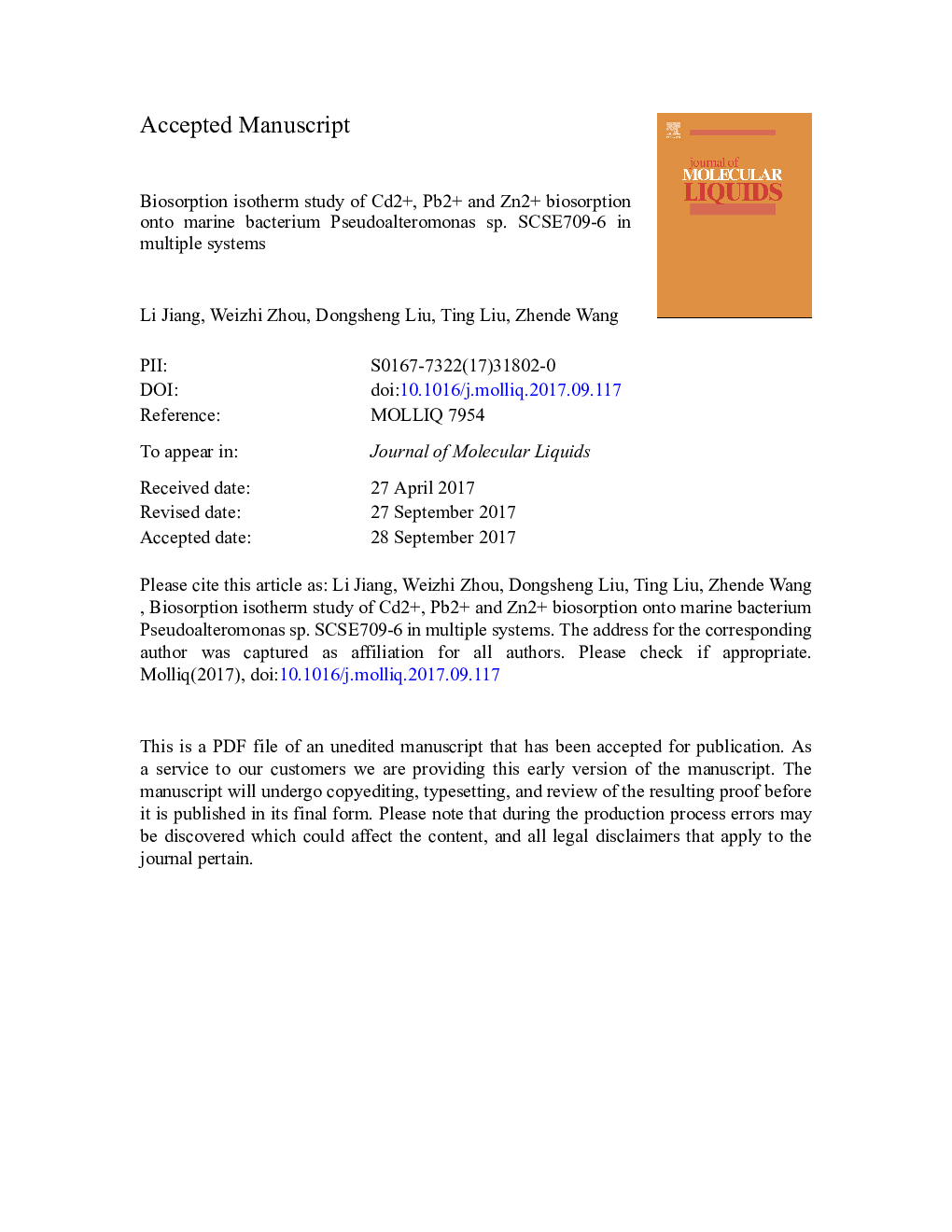| Article ID | Journal | Published Year | Pages | File Type |
|---|---|---|---|---|
| 5408197 | Journal of Molecular Liquids | 2017 | 34 Pages |
Abstract
To overcome the low efficiency and prerequisites conditions of simultaneous metals removal and the unsuitability of single metal adsorption isotherm models in multiple metals, the multiple biosorption of Cd2 +, Pb2 + and Zn2 + onto a new marine Pseudoalteromonas sp. SCSE709-6 from aqueous solution was studied and compared with single metal system. Results showed that Pseudoalteromonas sp. SCSE709-6 was a competitive biosorbent for metals from aqueous solutions in single system (maximum adsorption capacity: 1.38 mmol gâ 1 for Cd2 +, 1.05 mmol gâ 1 for Pb2 + and 0.91 mmol gâ 1 for Zn2 +, respectively). The affinity between metals and biosorbent calculated by the separation factor in binary metals systems followed the order: Pb2 + > Cd2 + > Zn2 +. In multiple metals systems, Cd2 + biosorption was the most sensitive, while Pb2 + biosorption was the least sensitive. In addition, Pb2 + biosorption had less pH dependence than the biosorption of Cd2 + and Zn2 +. Among six isotherm models applied in this study, the extended Freundlich isotherm model best described the binary metal biosorption behaviors. Isotherm analysis revealed that binary biosorption was a complex process which occurred both mono- and multi-layer biosorption. FT-IR result spectrum revealed that carboxyl, amide, acyl and hydroxyl played a significant role in metals biosorption. This study showed superior performance of metal removal by Pseudoalteromonas sp. SCSE709-6 in multiple metals systems.
Related Topics
Physical Sciences and Engineering
Chemistry
Physical and Theoretical Chemistry
Authors
Li Jiang, Weizhi Zhou, Dongsheng Liu, Ting Liu, Zhende Wang,
